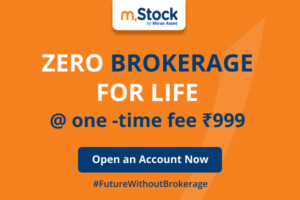Financial technology has always driven innovation and development. Recent years have witnessed major modifications to trading platforms. The transition from desktop-based systems to mobile apps has transformed stock trading and asset management. This page covers trading platforms’ history, focusing on the migration from desktop to mobile apps.

Those Early Days, Desktop-Based Trading Platforms
Online stock trading originated in the late 1990s when the internet started to transform a number of sectors completely. Trading platforms that run on desktops became quite effective instruments that let traders do business from the comfort of their homes or offices. These sites provided a number of important functions:
- Real-Time Data: Being able to access current market data changed everything and let traders make wise choices.
- Advanced Charting Tools: Sophisticated charting tools included with desktop platforms aided in technical analysis.
- Automated Trading: One big benefit for active traders was the capacity to create automated trading plans.
The Rise of the App for Trading
Technology progressed, and with it, the need for more easily available trading solutions. Desktop based trading platform saw a sea change when trading apps like mStock was released. As cell phones proliferated, trading apps put the desktop platforms’ power in consumers’ palms. Important functions of these applications consist of:
- User-Friendly Interface: Trading applications are made to be as simple as possible so that both novices and seasoned traders may use them.
- Instant Notifications: Real-time alerts and updates regarding market changes and their portfolios are available to users.
- Improved Security: Cryptography and biometric authentication are just two of the security-focused features included in contemporary trading apps.
Benefits and Difficulties of the Mobile Transition
To traders, the move from desktop-based systems to mobile apps has been quite advantageous:
- Accessibility: Trades may be completed fast and effectively, frequently with a few screen clicks, thanks to mobile apps. They free consumers from the limitations of being confined to a desktop computer.
- More cost-effective trading: Because some apps want to differentiate themselves from the rest, they provide the feature of opening a zero brokerage Demat account. mStock is one of such app. This ultimately benefits the trader.
- Comprehensive Tools: This shift has not been without difficulties, though. Mobile applications have to strike a compromise between offering a lot of functionality and keeping an intuitive design. Ensuring mobile device data security is another continuous worry.
Trading Apps’ Future
Platforms are still evolving, to be sure. Subsequent developments could consist of:
- Machine learning and artificial intelligence: These fields may provide insights and customized trading plans depending on user behavior and market developments.
- Integration with Other Financial Services: Trading applications that integrate more smoothly with banking and financial planning tools might offer a complete financial management experience. This could include the ability to easily set up a SIP Investment (Systematic Investment Plan) directly within the trading app, streamlining your investment strategy and automating regular contributions towards your long-term goals.
Conclusion
The development of trading platforms, from desktop systems to mobile apps, has radically altered our attitude toward investing and trading. Today’s stock trading apps, like mStock, combine the strength and features of conventional platforms with the accessibility and ease of use of mobile technology. This is particularly true for option trading app India, which are becoming increasingly popular in India.
The options trading app offers a convenient and powerful way to participate in the options market, allowing users to buy and sell options contracts directly from their smartphones. India is a rapidly growing market for options trading, and these apps are helping to make this complex financial instrument more accessible to a wider range of investors.